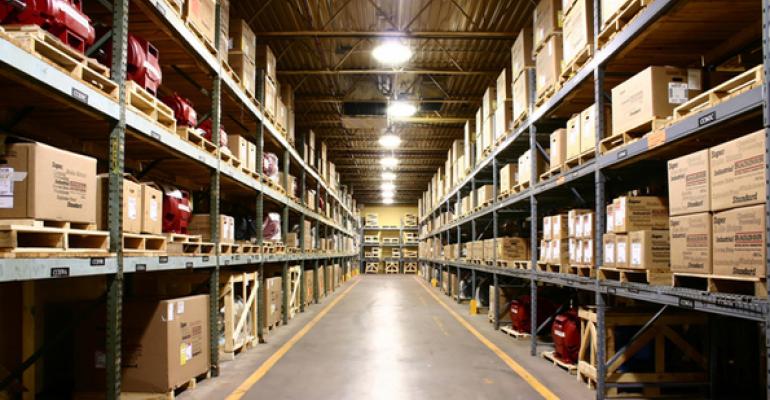While industrial is not the sexiest type of real estate, it is certainly a darling of investors. There are several reasons for today’s hot industrial marketplace, notes Mark Glagola, senior managing director at Houston-based Transwestern Investment Group.
Sales of industrial properties grew by 3.0 percent in the first quarter of 2017 compared to the same period a year ago, to $13.9 billion, according to New York City-based research firm Real Capital Analytics (RCA). That set industrial apart from the other commercial property sectors, where sales have been flat or slowing down, RCA researchers noted in their report. Investment sales involving single industrial assets reached a record deal volume in the first quarter, at $9.6 billion—a 15 percent increase over the first quarter of 2016.
There are several reasons for the sector’s popularity with investors.
First, industrial tenants are looking for higher quality in their properties, demanding features including high-dock doors and wide loading areas, 28- to 30-foot clear height ceilings and state-of-the-art sprinkler systems, among other things, according to Glagola. The key is that they are willing to pay more for assets that fit these criteria.
“Tenants are willing to pay more to get features they want, because they can turnaround inventory faster, which is better for the bottom line,” Glagola notes. Meanwhile, industrial properties don’t require expensive renovations or build-outs when there is tenant turnover, which suits investors.
Second, industrial real estate is perceived as a safe asset class, Glagola says. People increasingly prefer to shop online over shopping in physical stores, so there is continued growth in e-commerce.
“From our viewpoint, this is just the tip of the iceberg, as it is more cost effective to store merchandise in a warehouse and display it on a computer than to operate a store,” Glagola notes. A report from real estate services firm Colliers International noted that e-commerce sales grew by 14.0 percent between the fourth quarter of 2016 and the fourth quarter of 2015, and now represent 8.4 percent of total retail sales.
As a result, the industrial big-box sector, for example, finished 2016 with record property fundamentals, including all-time highs in annual net absorption and leasing activity, according to Colliers’s 2016 Year-End Industrial Logistics & Transportation Solutions Group Big-Box Market Report.
Thirdly, from a capital standpoint, industrial product is more efficient than other real estate types, and tremendous capital is chasing it, Glagola adds.
According to Transwestern research, industrial investment sales totaled $440 billion in 2016. With a combination of a huge population and the two biggest, busiest port system in the nation, the Los Angeles Basin attracted the greatest amount of investment last year, with nearly $8.2 billion in transactions. This market also has the highest values and lowest capitalization rates for industrial properties at 4.75 percent. New York was second, with nearly $4 million in sales and a 5.7 percent average cap rate, and Chicago third, with $3.6 million invested and a 6.0 percent cap rate. Dallas and Atlanta followed, with $2.5 million and $1.8 million in industrial property sales, respectively.
Where to buy
Using the analogy of a Smiley Face, Glagola notes that industrial demand is linked to the nation’s ports, sweeping from Seattle down through the Los Angeles Basin, and swinging in a smiley fashion southeast through Texas to Atlanta and up the East Coast to New York. Warehouse space along this path will likely continue to see strong demand because of proximity to logistics channels. The exception to the smiley face is the Chicago market.
Glagola notes that all of the top industrial markets have large populations that consume a tremendous amount of goods, but there are other reasons for exceptional performance of their industrial sectors. Los Angeles’s port and distribution systems feed markets throughout the Western U.S. and beyond via train land bridges. New York, the port of entry for European goods, has a geographic advantage, due to its proximity to 65 million people living within a 250-mile radius. Chicago is a rail hub for all the major rail systems moving east, west, north and south. Atlanta is a major logistics crossroads for the Southeast U.S., which is seeing tremendous population growth due to migration from the Rust Belt. And Dallas is “on fire” due to in- migration of companies and people.
A first quarter report from real estate services firm Cushman & Wakefield makes the following predictions for the industrial sector in 2017:
Logistics-related leasing will benefit from solid economic fundamentals that spur increased consumer spending.
Space deliveries are not expected to overpower leasing demand, but will meet demand and slowly bring property fundamentals back into balance.
Expect continued rental rate appreciation in the second quarter of 2017, with rent growth decelerating in the second half of the year.
On the investment side, Glagola notes that the biggest challenge facing investors is finding available properties. “Everyone is comfortable holding, nobody wants to sell,” he says. “As result, we’re seeing a drop off in sales volume.”
Going forward, the greatest opportunities in the industrial sector will be in upgrading class-B buildings to make them more efficient, especially with rents rising for more desirable class-A space. Pointing out that there are twice as many old industrial buildings as new class-A product, Glagola notes that investors are already capitalizing on this value-add opportunity in supply-constrained urban markets.
“What will be interesting to see is if this trend works its way out into secondary markets.”

